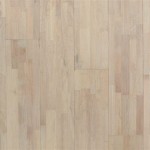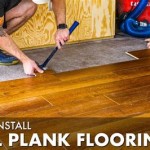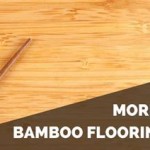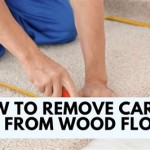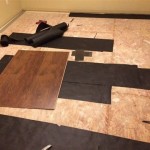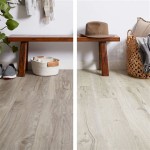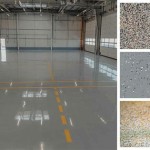How to Seal OSB Flooring: A Comprehensive Guide
Oriented strand board (OSB) is a versatile and cost-effective flooring option, but it requires sealing to protect it from moisture and wear. Sealing OSB flooring not only enhances its durability but also improves its aesthetic appeal.
Preparing the Surface
Before sealing OSB flooring, it's crucial to ensure a clean and smooth surface. Remove any debris, dust, or dirt using a broom or vacuum cleaner. If necessary, sand the floor lightly to remove any rough edges or splinters. Allow the floor to dry completely before proceeding further.
Choosing the Right Sealer
The type of sealer you choose will depend on the intended use of the flooring. For high-traffic areas, such as kitchens and hallways, a polyurethane sealer is recommended. Polyurethane sealers provide excellent protection against wear and moisture and are available in various finishes, including matte, satin, and gloss.
For low-traffic areas, such as bedrooms and closets, a water-based acrylic sealer may suffice. Acrylic sealers are easier to apply and dry faster than polyurethane sealers but offer less protection against wear.
Applying the Sealer
Before applying the sealer, stir it thoroughly to ensure an even consistency. Using a brush or roller designed for the type of sealer you're using, apply a thin, even coat to the floor. Work in small sections to avoid drying streaks.
Allow the first coat to dry completely according to the manufacturer's instructions. Once dry, apply a second coat for added protection. You may also choose to apply a third coat for heavy-duty areas.
Drying Time
The drying time for sealers varies depending on the type of sealer used and the ambient conditions. Polyurethane sealers typically require 24-48 hours to dry completely, while acrylic sealers dry within a few hours.
It's essential to allow the sealer to dry fully before walking or placing furniture on the floor. Failure to do so can lead to damage or incorrect adhesion of the sealer.
Maintenance and Care
To maintain the longevity of your sealed OSB flooring, regular cleaning and maintenance are necessary. Sweep or vacuum the floor regularly to remove loose dirt and debris. For deeper cleaning, use a damp mop with a mild detergent. Avoid using abrasive cleaners or scouring pads, as they can damage the sealer.
Re-sealing the floor every few years is recommended to maintain its protective properties. The frequency of re-sealing will depend on the type of traffic and wear the floor receives.
Conclusion
Sealing OSB flooring is a straightforward process that significantly enhances the durability and appearance of the flooring. By following these steps and using the appropriate materials, you can protect your OSB flooring from wear, moisture, and stains, ensuring its beauty and functionality for years to come.

How To Seal Osb Flooring 4 Steps 7 Tips Is Enough

How To Seal Osb Flooring 4 Steps 7 Tips Is Enough

Using Osb As Your Primary Floor Silvaris

How To Seal Osb Flooring 4 Steps 7 Tips Is Enough

How To Seal Osb Flooring 4 Steps 7 Tips Is Enough

Afm Safe Seal Plywood Osb Sealer The Green Design Center

Using Osb As Your Primary Floor Silvaris

How To Waterproof Osb Floors

Using Osb As Your Primary Floor Silvaris

Finished Osb Flooring Is A Great Inexpensive Option Rustic Crafts Diy
See Also
